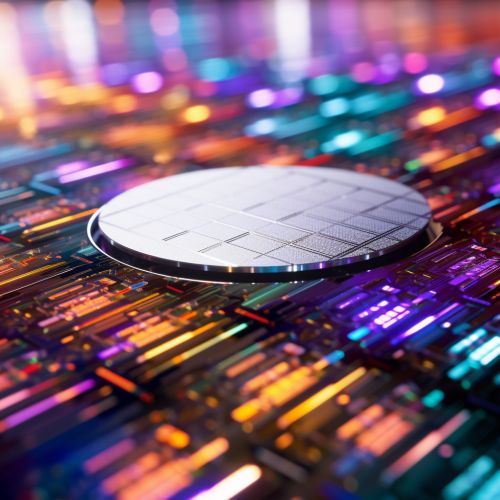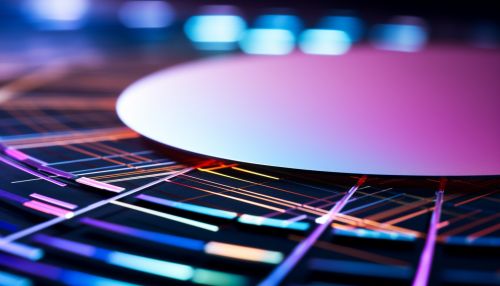Semiconductors
Introduction
Semiconductors are a class of materials with properties that fall between those of conductors and insulators. They are distinguished by their unique electronic properties, which can be manipulated through doping and other processes to create devices that amplify signals, switch currents, and perform other useful tasks. Semiconductors are the foundation of modern electronics, including transistors, solar cells, light-emitting diodes (LEDs), and integrated circuits.
History
The understanding and use of semiconductors has a long history, dating back to the early 19th century when Faraday first observed their unique properties. The first practical application of semiconductors in electronics was the 1904 invention of the cat's whisker detector, a primitive semiconductor diode used in early radio receivers.
Properties
Semiconductors are characterized by their band gap, which is the energy difference between the valence band of electrons and the conduction band. The size of the band gap determines many of the electrical properties of the material. In a semiconductor, the band gap is large enough to prevent electron jump from the valence to the conduction band at absolute zero, but small enough to allow some thermal excitation of electrons at room temperature.
Types of Semiconductors
There are two main types of semiconductors: intrinsic and extrinsic. Intrinsic semiconductors are pure semiconductors without any significant impurity. Extrinsic semiconductors, on the other hand, have been intentionally doped with impurities to modify their properties.
Intrinsic Semiconductors
Intrinsic semiconductors are made of only one kind of material. Silicon and germanium are two examples of materials commonly used as intrinsic semiconductors. The number of free electrons and holes in an intrinsic semiconductor are equal.
Extrinsic Semiconductors
Extrinsic semiconductors are made by adding impurity atoms to an intrinsic semiconductor. This process, known as doping, increases the number of free charge carriers (either electrons or holes) in the semiconductor. There are two types of extrinsic semiconductors, known as n-type and p-type.
N-Type Semiconductors
An n-type semiconductor is created by adding pentavalent impurities such as phosphorus, arsenic, or antimony to the semiconductor. These impurities have five valence electrons, one of which can be easily excited to move freely in the crystal lattice.
P-Type Semiconductors
A p-type semiconductor is created by adding trivalent impurities such as boron, gallium, or indium to the semiconductor. These impurities have three valence electrons, creating a hole that can move freely in the crystal lattice.
Semiconductor Devices
Semiconductor devices are electronic components that exploit the electronic properties of semiconductor materials. They include diodes, transistors, and integrated circuits.
Diodes
A diode is a two-terminal electronic component that conducts current primarily in one direction. It has low resistance in one direction, and high resistance in the other.
Transistors
A transistor is a semiconductor device used to amplify or switch electronic signals and electrical power. It is composed of semiconductor material usually with at least three terminals for connection to an external circuit.
Integrated Circuits
An integrated circuit is a set of electronic circuits on one small flat piece of semiconductor material, normally silicon. The integration of large numbers of tiny transistors into a small chip results in circuits that are orders of magnitude smaller, cheaper, and faster than those constructed of discrete electronic components.
Applications
Semiconductors have a wide range of applications in various fields. They are used in the manufacturing of various kinds of electronic devices, including diodes, transistors, and integrated circuits. These devices are used in a multitude of electronic equipment, including computers, televisions, mobile phones, and radios. Semiconductors are also used in the production of photovoltaic cells used in solar panels, and in the manufacturing of light-emitting diodes (LEDs) used in lighting and display technologies.
Future Developments
The field of semiconductors continues to advance, with new materials and technologies continually being developed. One area of research is the development of organic semiconductors, which are based on carbon-based molecules or polymers. Another area of research is the development of two-dimensional materials, such as graphene, which have unique electronic properties.
See Also


